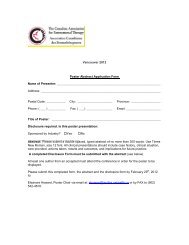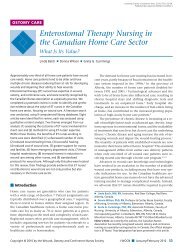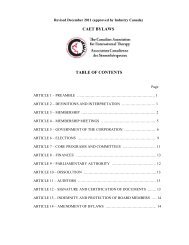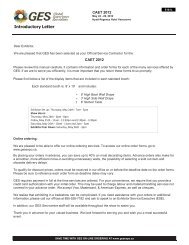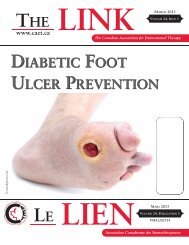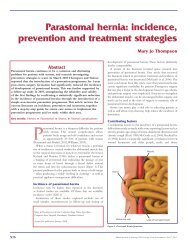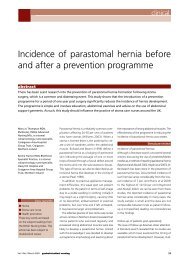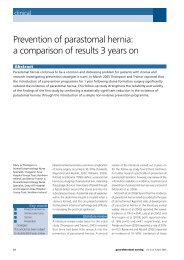CAET Position Statement Enterostomal Therapy Nursing
CAET Position Statement Enterostomal Therapy Nursing
CAET Position Statement Enterostomal Therapy Nursing
You also want an ePaper? Increase the reach of your titles
YUMPU automatically turns print PDFs into web optimized ePapers that Google loves.
The five roles of ETN practice are interrelated and dependant on the needs of clients,<br />
families, communities and other health care professionals within their respective care<br />
environment. The roles demonstrated by the ETN are:<br />
LEADER<br />
As a leader, the ETN advances <strong>Enterostomal</strong> <strong>Therapy</strong> nursing practice and promotes quality<br />
client care. As a role model, resource, facilitator, advocate, decision maker and coordinator, the<br />
ETN demonstrates excellence in leadership.<br />
As a change agent and through innovative practice, the ETN is instrumental in shaping social and<br />
economic policy. This leadership is exercised within the three domains of the ETN specialty<br />
locally, regionally, provincially, nationally and internationally.<br />
CLINICIAN<br />
The ETN provides research and evidence-based practice in a specialized clinical care and<br />
management environment. As a clinician, the ETN provides comprehensive assessment,<br />
recommendations, consultation and intervenes directly and indirectly in the management and<br />
prevention of complex practice concerns within the identified domains of the specialty.<br />
CONSULTANT<br />
The ETN promotes effective care through formal and informal consultation and leadership at<br />
professional and corporate levels. Consultation may involve but is not limited to clinical practice<br />
issues, policy and guideline development, program development, product evaluations and<br />
recommendations. (Turnbull, 2001).<br />
EDUCATOR<br />
The ETN assist clients in making informed decisions regarding their health through education and<br />
teaching by providing consistent, reliable and accurate information. As an educator for other<br />
health care professionals and students, the ETN promotes quality <strong>Enterostomal</strong> <strong>Therapy</strong> <strong>Nursing</strong><br />
practice through teaching, mentoring, programme development and quality monitoring.<br />
RESEARCHER<br />
The ETN is committed to strengthening the <strong>Enterostomal</strong> <strong>Therapy</strong> <strong>Nursing</strong> specialty through the<br />
participation and application of translational research and evidence based practice. Through<br />
inquiry, identification of research topics and active investigation, the ETN is able to impact and<br />
evolve clinical practice and standards of care.<br />
REFERENCES<br />
<strong>CAET</strong> (2008). <strong>Enterostomal</strong> <strong>Therapy</strong> <strong>Nursing</strong> Research Study Fact Sheet. Marketing Package.<br />
Canadian <strong>Nursing</strong> Association. (2003). <strong>Position</strong> <strong>Statement</strong>: Clinical Nurse Specialist.<br />
Harris, C., Shannon, R. (2008). An Innovative <strong>Enterostomal</strong> <strong>Therapy</strong> Nurse Model of Community Wound Care<br />
Delivery. JWOCN, March/April .<br />
Marquis, P., Marel, A., Johnson, B. (2003). Quality of Life in Patients with Stomas: The Montreux Study Ostomy Wound<br />
Management; 49 (2); pp. 48-55<br />
Turnbull, G.B. (2001). Ostomy Supplies out of Balance Ostomy Wound Management, 47 (4); pp. 2-3<br />
2





